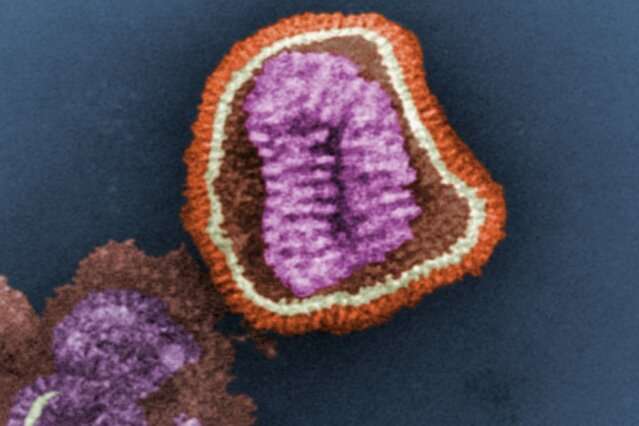New study explains important cause of fatal influenza

It is largely unknown why influenza infections lead to an increased risk of bacterial pneumonia. Researchers at Karolinska Institutet have now described important findings leading to so-called superinfections, which claim many lives around the world every year. The study is published in the Proceedings of the National Academy of Sciences, and could contribute to research on COVID-19.
The Spanish Flu was an influenza pandemic that swept across the world in 1918–20 and unlike many other pandemics disproportionately hit young otherwise healthy adults. One important reason for this was so-called superinfections caused by bacteria, in particular pneumococci.
Influenza is caused by a virus, but the most common cause of death is secondary bacterial pneumonia rather than the influenza virus per se. Pneumococcal infections are the most common cause of community-acquired pneumonia and a leading global cause of death. A prior influenza virus infection sensitizes for pneumococcal infections, but mechanisms behind this increase susceptibility are not fully understood. Researchers at Karolinska Institutet have now identified influenza-induced changes in the lower airways that affect the growth of pneumococci in the lungs.
Leakage from the blood
Using an animal model, the researchers found that different nutrients and antioxidants, such as vitamin C and other normally cell protective substances leak from the blood, thereby creating an environment in the lungs that favours growth of the bacteria. The bacteria adapt to the inflammatory environment by increasing the production of the bacterial enzyme HtrA.
The presence of HtrA weakens the immune system and promotes bacterial growth in the influenza-infected airways. The lack of HtrA stops bacterial growth.
"The ability of pneumococcus to grow in the lower airways during an influenza infection seems to depend on the nutrient-rich environment with its higher levels of antioxidants that occurs during a viral infection, as well as on the bacteria's ability to adapt to the environment and protect itself from being eradicated by the immune system," says principal investigator Birgitta Henriques Normark, professor at the Department of Microbiology, Tumor and Cell Biology, Karolinska Institutet.
Possible new treatments
The results provide valuable information on how bacteria integrate with their environment in the lungs and could be used to find new therapies for double infections between the influenza virus and pneumococcal bacteria.
"HtrA is an enzyme, a protease, which helps to weaken the immune system and allows pneumococcal bacteria to penetrate the protective cell layer on the inside of the airways," explains the paper's first author Vicky Sender, researcher at the same department. "A possible strategy can therefore be use of protease inhibitors to prevent pneumococcal growth in the lungs."
It is still not known if COVID-19 patients are also sensitive to such secondary bacterial infections, but the researchers think that similar mechanisms could potentially be found in severely ill COVID-19 patients.
"It's likely that acute lung inflammation, regardless of cause, gives rise to leakage of nutrients and antioxidants, and to an environment that fosters bacterial growth," says Professor Henriques Normark.








 个人中心
个人中心 我的培训班
我的培训班 反馈
反馈












Comments
Something to say?
Log in or Sign up for free